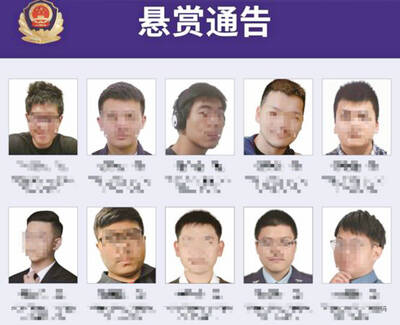LG.Philips LCD Co, the world's largest maker of liquid-crystal displays, more than tripled its group net income last year, underscoring the shift in consumer preference toward flat screens instead of bulkier glass tubes.
Profit rose to 1 trillion won (US$881 million) from 289 billion won a year earlier, Seoul-based LG.Philips said in a regulatory filing. Sales jumped 71 percent to 6.1 trillion won.
LG.Philips, a venture between Korea's LG Electronics Inc and Royal Philips Electronics NV of the Netherlands, and other LCD makers are investing billions of dollars in production facilities as demand for slimmer screens rises. Global sales from LCDs, which overtook the computer memory-chip market last year, will grow 56 percent this year, industry researcher IDC said.
"The LCD market has gotten a lot of investor attention since the middle of last year, given its bright prospects," said Kang Shin Woo, who oversees about US$1.5 billion as chief investment officer at PCA Investment Trust Management Co in Seoul. "Growth continues to be good as LCD TV demand seems to make up for the slowing growth in demand for LCD monitors."
Shares of Samsung Electronics Co, the world's second-biggest LCD maker, have risen 26 percent in the past three months and shares of Taiwan's AU Optronics Corp (
IDC joins other industry researchers in seeing a boom in LCD sales. Texas-based DisplaySearch said earlier this month that fourth-quarter LCD shipments rose 61 percent from a year earlier to 30 million screens, a fifth more than what the research company earlier expected.
"Demand for LCD TVs will drive the next wave of growth in the LCD panel market," IDC analyst Stanley Jeong said in a press release yesterday. "Revenue in the LCD-TV market segment will grow at such a torrid pace that it will exceed revenue in the notebook panel market by 2005."
Sales of panels geared for televisions are projected to grow an average of 75 percent annually through 2007, according to DisplaySearch. By comparison, the researcher expects average annual growth of 18 percent for panels geared for computer monitors and 5 percent for notebook panels.
Rising demand has prompted LG.Philips to lead development of a US$22 billion LCD industrial complex in South Korea by building the world's biggest flat-screen factory. Suwon, Korea-based Samsung Electronics plans to spend 20 trillion won (US$17.3 billion) in the next 10 years on an LCD complex southwest of Seoul.
Still, investors such as CJ Investment Trust Management Co's Chung Doo-sun say that it's too early to invest in LCDs solely because of TV demand. TVs accounted for about 9 percent of global flat-panel revenue last year, compared with 51 percent for monitors in computers and notebooks, according to DisplaySearch.
"TV is showing fast growth but it still accounts for a small portion of the total," Chung said. "It's going to be 2007 or 2008 before investors get a clear picture about TV demand."

A Chinese aircraft carrier group entered Japan’s economic waters over the weekend, before exiting to conduct drills involving fighter jets, the Japanese Ministry of Defense said yesterday. The Liaoning aircraft carrier, two missile destroyers and one fast combat supply ship sailed about 300km southwest of Japan’s easternmost island of Minamitori on Saturday, a ministry statement said. It was the first time a Chinese aircraft carrier had entered that part of Japan’s exclusive economic zone (EEZ), a ministry spokesman said. “We think the Chinese military is trying to improve its operational capability and ability to conduct operations in distant areas,” the spokesman said. China’s growing

Taiwan yesterday denied Chinese allegations that its military was behind a cyberattack on a technology company in Guangzhou, after city authorities issued warrants for 20 suspects. The Guangzhou Municipal Public Security Bureau earlier yesterday issued warrants for 20 people it identified as members of the Information, Communications and Electronic Force Command (ICEFCOM). The bureau alleged they were behind a May 20 cyberattack targeting the backend system of a self-service facility at the company. “ICEFCOM, under Taiwan’s ruling Democratic Progressive Party, directed the illegal attack,” the warrant says. The bureau placed a bounty of 10,000 yuan (US$1,392) on each of the 20 people named in

Nine retired generals from Taiwan, Japan and the US have been invited to participate in a tabletop exercise hosted by the Taipei School of Economics and Political Science Foundation tomorrow and Wednesday that simulates a potential Chinese invasion of Taiwan in 2030, the foundation said yesterday. The five retired Taiwanese generals would include retired admiral Lee Hsi-min (李喜明), joined by retired US Navy admiral Michael Mullen and former chief of staff of the Japan Self-Defense Forces general Shigeru Iwasaki, it said. The simulation aims to offer strategic insights into regional security and peace in the Taiwan Strait, it added. Foundation chair Huang Huang-hsiung

PUBLIC WARNING: The two students had been tricked into going to Hong Kong for a ‘high-paying’ job, which sent them to a scam center in Cambodia Police warned the public not to trust job advertisements touting high pay abroad following the return of two college students over the weekend who had been trafficked and forced to work at a cyberscam center in Cambodia. The two victims, surnamed Lee (李), 18, and Lin (林), 19, were interviewed by police after landing in Taiwan on Saturday. Taichung’s Chingshui Police Precinct said in a statement yesterday that the two students are good friends, and Lin had suspended her studies after seeing the ad promising good pay to work in Hong Kong. Lee’s grandfather on Thursday reported to police that Lee had sent